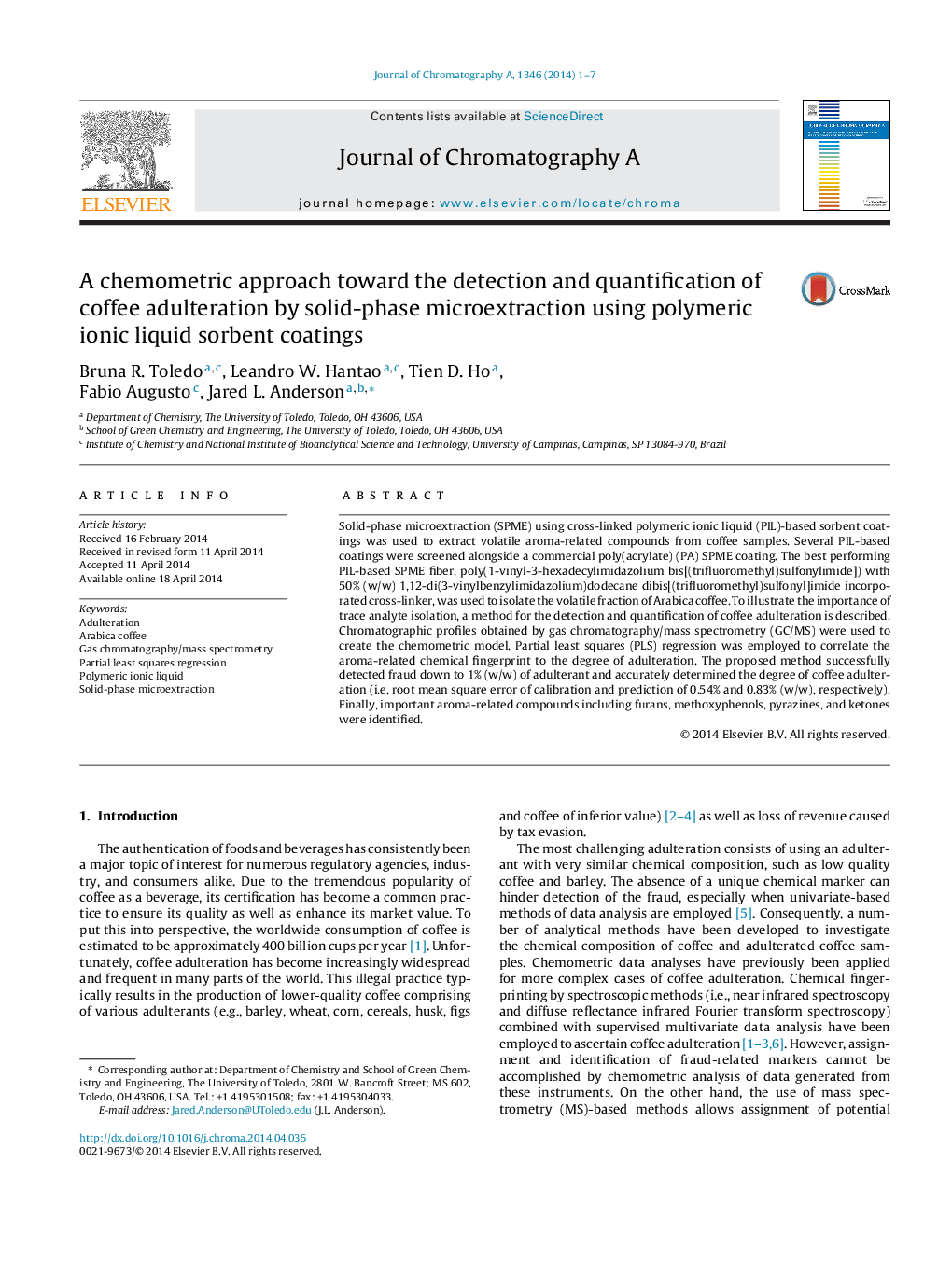| Article ID | Journal | Published Year | Pages | File Type |
|---|---|---|---|---|
| 1199893 | Journal of Chromatography A | 2014 | 7 Pages |
•Chemical profiling of Coffea arabica by polymeric ionic liquid SPME is described.•Partial least squares regression correlated the aroma fingerprint to adulteration.•Compounds that contributed to the PLS model were identified and assigned.•Trace aroma volatiles exhibited a decisive role in the detection of coffee fraud.
Solid-phase microextraction (SPME) using cross-linked polymeric ionic liquid (PIL)-based sorbent coatings was used to extract volatile aroma-related compounds from coffee samples. Several PIL-based coatings were screened alongside a commercial poly(acrylate) (PA) SPME coating. The best performing PIL-based SPME fiber, poly(1-vinyl-3-hexadecylimidazolium bis[(trifluoromethyl)sulfonylimide]) with 50% (w/w) 1,12-di(3-vinylbenzylimidazolium)dodecane dibis[(trifluoromethyl)sulfonyl]imide incorporated cross-linker, was used to isolate the volatile fraction of Arabica coffee. To illustrate the importance of trace analyte isolation, a method for the detection and quantification of coffee adulteration is described. Chromatographic profiles obtained by gas chromatography/mass spectrometry (GC/MS) were used to create the chemometric model. Partial least squares (PLS) regression was employed to correlate the aroma-related chemical fingerprint to the degree of adulteration. The proposed method successfully detected fraud down to 1% (w/w) of adulterant and accurately determined the degree of coffee adulteration (i.e, root mean square error of calibration and prediction of 0.54% and 0.83% (w/w), respectively). Finally, important aroma-related compounds including furans, methoxyphenols, pyrazines, and ketones were identified.
